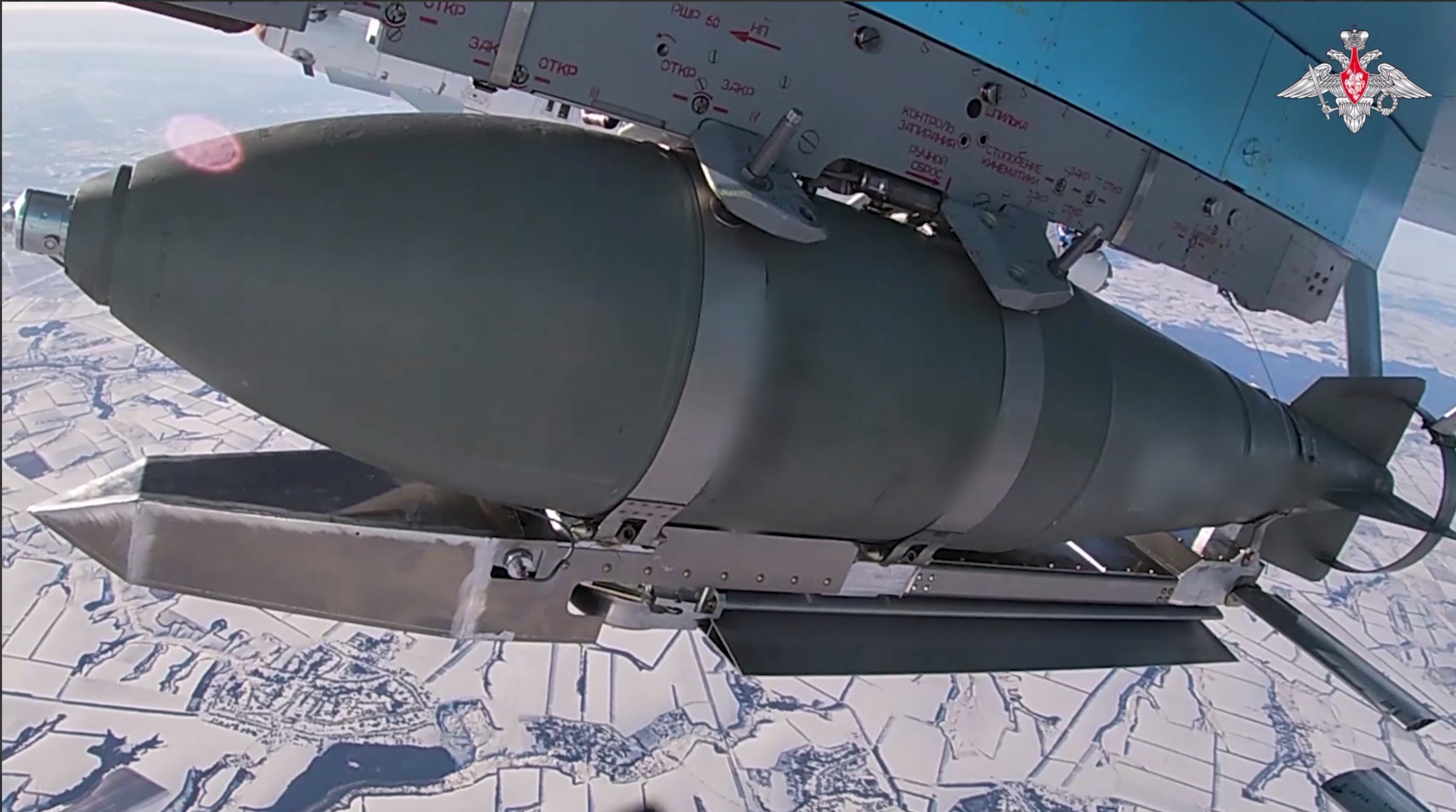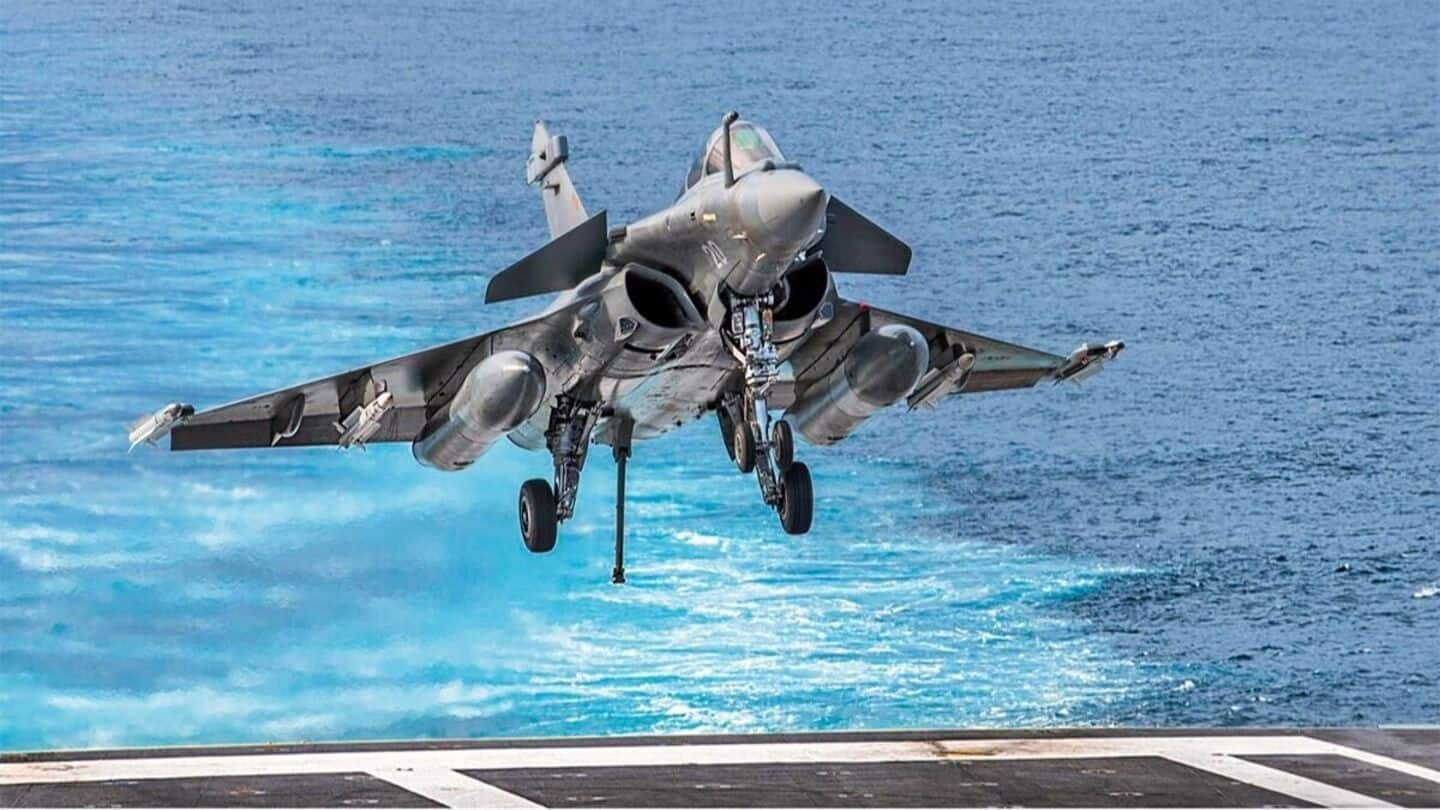SOURCE: IDRW.ORG


The Indian Army’s recent decision to order 2,978 Force Gurkha vehicles from Force Motors, as announced on April 3, 2025, has sparked intense debate among defense enthusiasts. This landmark order, valued in the crores, underscores the Army’s trust in the Gurkha over competitors like the Mahindra Thar and Maruti Suzuki Jimny for its military operations. But why did the Army opt for the Gurkha, especially when the Thar boasts superior power and the Jimny offers lightweight reliability? The answer lies in a mix of historical ties, battlefield suitability, and strategic alignment with India’s defense needs.
Force Motors’ relationship with the Indian Army dates back to 1958, when the company—then known as Bajaj Tempo—began operations in India. Its first offering, the Tempo Hanseat, a three-wheeled utility vehicle, was quickly adopted by the Army for light transport duties. Often dubbed the “pig” for its squat, rugged design, the Hanseat ferried troops and supplies in non-combat zones, proving its worth in logistics. By 1969, Force Motors introduced the Tempo Matador, a commercial van with a spacious rear bed, which the Army used extensively to transport troops, goods, and even large ammunition. While exact numbers are unavailable, the Matador’s ubiquity in military depots during the 1970s suggests procurement in the thousands—a testament to Force Motors’ early reliability.
Continue readingSOURCE: AFI
.png)

Adani Defence and Aerospace (@AdaniDefence) has made a powerful entry into the global ammunition market, leveraging its state-of-the-art manufacturing capabilities to meet surging international demand. With a strategic focus on exports, the company is positioning India as a key player in the defence supply chain while reserving significant capacity for domestic needs.
The Kanpur-based facility, one of South Asia’s largest integrated ammunition complexes, is already scaling up production. For small arms ammunition, Adani Defence has a current capacity of 150 million rounds annually, with plans to double this to 300 million rounds by the end of 2025. This expansion has been met with strong global interest, as evidenced by export orders already booked for the next two years. The facility produces a range of small-calibre rounds, including 5.56x45mm, 7.62x51mm, and 9x19mm, catering to rifles, carbines, and pistols used by armed forces worldwide.
Continue readingSOURCE: AFI


India’s Northeast, long known for its scenic beauty and rugged terrain, is rapidly transforming into an unexpected haven for high-speed motorsports. The region’s newly developed expressways, coupled with minimal traffic, have caught the attention of Indian supercar owners seeking the ultimate thrill of speed. These modern roads, stretching through the lush landscapes of states like Arunachal Pradesh, Assam, and Meghalaya, are becoming a playground for automotive enthusiasts eager to test the limits of their high-performance machines.
The catalyst for this phenomenon lies in India’s strategic push to bolster infrastructure along its borders. The government’s policy of constructing high-quality roads to facilitate armed forces logistics and promote border tourism has inadvertently created a paradise for supercar drivers. These expressways, designed for efficiency and connectivity, offer long, smooth stretches with sparse traffic—perfect conditions for pushing Lamborghinis, Ferraris, and Porsches to their limits.
Continue readingSOURCE: AFI


On April 12, 2025, Ukraine suffered a significant blow with the loss of a U.S.-made F-16 fighter jet during a combat mission, resulting in the death of its 26-year-old pilot, Captain Pavlo Ivanov. The Ukrainian Air Force confirmed the incident, stating, “On April 12, 2025, while performing a combat mission on an F-16 aircraft, 26-year-old Pavlo Ivanov died (…) he died in combat.” According to a BBC report, the jet was likely shot down by Russian forces, with either an R-37 air-to-air missile or a surface-to-air missile from an S-400 air defense system as the probable culprits. The lack of detailed disclosure from Kyiv has fueled speculation and highlighted the intense technological and tactical struggle unfolding in Ukraine’s skies.
This marks the second confirmed loss of an F-16 for Ukraine since the jets were delivered by Western allies in 2024. The first incident occurred on August 26, 2024, when pilot Oleksii Mes, call sign “Moonfish,” perished while countering a massive Russian missile attack. Although Ukraine launched an investigation, no conclusive findings were released. A Wall Street Journal report suggested friendly fire from a Patriot air defense system or mechanical failure as possible causes, though these remain unconfirmed. The ambiguity surrounding both incidents underscores the challenges of operating advanced Western aircraft in a contested airspace dominated by sophisticated Russian defenses.
Continue readingSOURCE: AFI


The Parliamentary Standing Committee on Defence, chaired by Shri Radha Mohan Singh, visited the Solid State Physics Laboratory (SSPL) of the Defence Research and Development Organisation (DRDO) in Delhi today, gaining firsthand insight into India’s strides toward self-reliance in cutting-edge defence technologies. The committee was briefed on SSPL’s pioneering work in advanced semiconductors, optoelectronics, and next-generation materials, underscoring DRDO’s pivotal role in bolstering India’s Atmanirbhar Bharat initiative.
During the visit, the committee witnessed a showcase of SSPL’s innovations, including advancements in Silicon Carbide (SiC) technology, infrared (IR) devices, Gallium Nitride (GaN) and Gallium Arsenide (GaAs) Monolithic Microwave Integrated Circuits (MMICs), sensors, Terahertz (THz) technologies, and quantum technology. These breakthroughs are critical for developing indigenous defence systems, ranging from radar and missile guidance to secure communications and electronic warfare.
Continue readingSOURCE: RAUNAK KUNDE / NEWS BEAT / IDRW.ORG


In a significant leap forward for India’s indigenous aero-engine development, BrahMos Aerospace has been entrusted with designing a new afterburner section for the Kaveri Derivative Engine (KDE), a critical component of the long-standing Kaveri engine program led by the Gas Turbine Research Establishment (GTRE) under the Defence Research and Development Organisation (DRDO).
The Kaveri Derivative Engine (KDE), a non-afterburning (dry) variant of the Kaveri, has been developed to produce a stable dry thrust of 49kN, making it suitable for applications like the DRDO Ghatak stealth Unmanned Combat Aerial Vehicle (UCAV). However, for manned fighter jets, an afterburner is essential to provide the additional thrust needed for combat maneuvers and supersonic flight. The new afterburner section, designed by BrahMos Aerospace, is expected to add 29.4kN of thrust—approximately 60% of the KDE’s dry thrust—bringing the combined wet thrust to an impressive 78.4kN.
Continue readingSOURCE: RAUNAK KUNDE / NEWS BEAT / IDRW.ORG


The Indian Army, one of the largest standing armies in the world, has embarked on a significant modernization drive to replace its ageing fleet of artillery guns. Among the most notable systems to be phased out are the Bofors FH77 guns, which have been in service since the early 1980s. Around 200 Swedish-origin guns, originally procured as part of a larger order of over 400 units, are still operational.
However, with the rapid advancements in artillery technology and the challenges posed by outdated systems, the Army plans to retire the Bofors FH77 by 2030 onwards, making way for more advanced and capable 155mm guns like the indigenous Dhanush and the Advanced Towed Artillery Gun System (ATAGS).
Continue readingSOURCE: RAUNAK KUNDE / NEWS BEAT / IDRW.ORG


India’s indigenous defense capabilities are set to take another leap forward as the Zorawar light tank, a collaborative triumph between Larsen & Toubro (L&T) and the Defence Research and Development Organisation’s (DRDO) Combat Vehicles Research and Development Establishment (CVRDE), prepares for critical field firing tests in the Rajasthan desert later this month.
Following successful high-altitude trials in Ladakh in December 2024, these upcoming tests will evaluate the tank’s 105 mm gun performance under extreme heat, marking a key milestone toward its potential induction into the Indian Army by 2027. The Zorawar, designed for agility and firepower in challenging terrains, underscores India’s push for self-reliance in countering regional threats, particularly along the Line of Actual Control (LAC) with China.
Continue readingSOURCE: AFI


The Defence Research and Development Organisation (DRDO) has partnered with Hyderabad-based Rathi Aerospace Labs to develop a gas generator-based actuation system for its Smart Anti-Airfield Weapon (SAAW) program, marking a significant advancement in India’s precision-guided munitions technology. The collaboration focuses on a low-temperature gas generator operating at 150°C, a breakthrough innovation that promises to enhance the reliability and efficiency of the SAAW while offering broader applications across defense and aerospace sectors.
The SAAW, developed by the DRDO’s Research Centre Imarat (RCI) in Hyderabad with support from other DRDO labs and the Indian Air Force (IAF), is a 125 kg-class precision-guided bomb designed to neutralize enemy airfields, runways, bunkers, and aircraft hangars from a standoff range of 100 km. First tested successfully in May 2016, the SAAW has since been approved for procurement by the IAF and Indian Navy, with production underway following trials in 2020. The weapon’s lightweight design, coupled with satellite navigation and an electro-optical seeker, makes it a critical asset for India’s airpower, enabling strikes on high-value targets without risking aircraft or pilots.
Continue readingSOURCE: AFI


In a significant leap toward self-reliance in defense technology, the Indian Army has showcased a revolutionary #MadeInIndia wire-guided, jam-proof First Person View (FPV) drone, poised to transform infantry operations. Spotted with Army personnel in recent field demonstrations, this cutting-edge unmanned aerial vehicle (UAV) boasts a range of 2-10 kilometers, unprecedented precision, and a psychological edge that promises to wear down adversaries both mentally and physically. Adding to its versatility, a larger variant equipped with an optical fiber pack, extending its range to 10-20 kilometers, is reportedly under development, signaling India’s ambition to dominate the future of drone warfare.
Designed to integrate seamlessly into infantry units, the new FPV drone is set to become a force multiplier on the battlefield. With a range of 2-10 kilometers in its standard configuration, it enables real-time reconnaissance, precision strikes, and tactical dominance in diverse terrains, from the rugged mountains of Jammu and Kashmir to the dense jungles of Northeast India. Its wire-guided system, utilizing a thin, robust cable, ensures immunity to electronic jamming—a critical advantage in modern warfare where adversaries deploy sophisticated electronic warfare (EW) systems to disrupt radio-controlled drones.
Continue readingSOURCE: AFI


India’s defense ecosystem achieved a significant milestone with the successful development of the Long-Range Glide Bomb (LRGB), a 1,000-kg class precision-guided munition designed by the Research Centre Imarat (RCI), Armament Research and Development Establishment (ARDE), and Integrated Test Range (ITR), Chandipur. Flight-tested in October 2024 from a Sukhoi Su-30 MKI off Odisha’s coast, the LRGB demonstrated pinpoint accuracy, leveraging an advanced guidance system and foldable wings to strike targets up to 100 km away.
As India celebrates this leap in indigenous technology, lessons from Russia’s use of the FAB-1500 glide bomb in the Russia-Ukraine conflict highlight why India should now prioritize developing a 1,500-kg class glide bomb. Such a weapon could enhance the Indian Air Force’s (IAF) ability to deliver devastating, cost-effective strikes, countering fortified defenses and shifting the balance in potential conflicts along its borders.
Continue readingSOURCE: AFI


In a transformative move for its naval aviation, India is poised to spend $7.6 billion on 26 Rafale-M (Marine) fighter jets from France. At an eye-watering $292 million per jet, this deal has sparked debates about cost, but it’s far more than a simple purchase of aircraft—it’s a strategic pivot to secure India’s maritime dominance and address a critical operational gap.
The story begins with a milestone: the commissioning of India’s first indigenous aircraft carrier, INS Vikrant, on September 2, 2022. While this showcased India’s technological prowess and political resolve, it also exposed a glaring weakness—insufficient carrier-based fighter jets. The Rafale-M deal is India’s answer to this challenge, and here’s why it’s a game-changer.
Continue readingSOURCE: IDRW.ORG


In a significant stride toward modernizing India’s small arms arsenal, the Defence Research and Development Organisation (DRDO) has showcased the first prototype of a 6.8x43mm assault rifle, developed by its Armament Research and Development Establishment (ARDE) in Pune.
Unveiled in early 2025, this cutting-edge weapon features a polymer 30-round magazine with metal inserts and a telescopic stock, marking it as the latest addition to India’s evolving family of indigenous assault rifles. With a unique blend of stopping power akin to the 7.62x39mm round and a lighter profile than the heftier 7.62x51mm, this rifle could position itself as a frontrunner for the Indian Army’s future standard-issue firearm.
Continue readingSOURCE: IDRW.ORG


The Indian Air Force (IAF) has called for industrial collaboration to develop a cutting-edge remote real-time in-flight health monitoring system for its aircrew, a move aimed at enhancing flight safety and operational effectiveness. The IAF’s initiative focuses on leveraging non-invasive, wearable sensor technology to monitor the physiological conditions of pilots during flight, providing valuable medical data that can be analyzed to improve safety protocols and ensure timely medical interventions. This development reflects the IAF’s commitment to adopting advanced technologies to safeguard its personnel, particularly in high-stress environments where pilots are subjected to extreme physical and mental demands.
The IAF emphasized the importance of this system, stating, “Remote real-time in-flight health monitoring of aircrew will offer valuable medical data, analysis of which can enhance flight safety.” Pilots operating high-performance aircraft, such as the IAF’s Su-30 MKI, Mirage 2000, and Rafale jets, face significant physiological challenges, including high G-forces, rapid changes in altitude, and prolonged exposure to stress, all of which can impact their health and performance. Real-time monitoring of vital signs during flight can provide critical insights into a pilot’s condition, enabling ground-based medical teams to detect early warning signs of issues like hypoxia, fatigue, or cardiovascular stress, and take preventive measures to avoid mishaps.
Continue readingSOURCE: AFI


In February 2025, U.S. President Donald Trump made headlines by announcing a potential offer to supply India with the Lockheed Martin F-35A Lightning II, a fifth-generation stealth fighter coveted by air forces worldwide. The proposal, pitched as part of a broader initiative to boost U.S.-India defense ties, sparked intense debate about the Indian Air Force’s (IAF) modernization strategy.
However, nearly three months later, no formal offer has materialized, and the IAF’s renewed push to procure additional Dassault Rafale jets signals a closing window for American fighters in India’s arsenal. With India doubling down on self-reliance through programs like the Advanced Medium Combat Aircraft (AMCA), the Rafale may well be the last foreign fighter jet India acquires, potentially ending any prospect of the IAF operating U.S.-built aircraft like the F-35A.
Continue reading